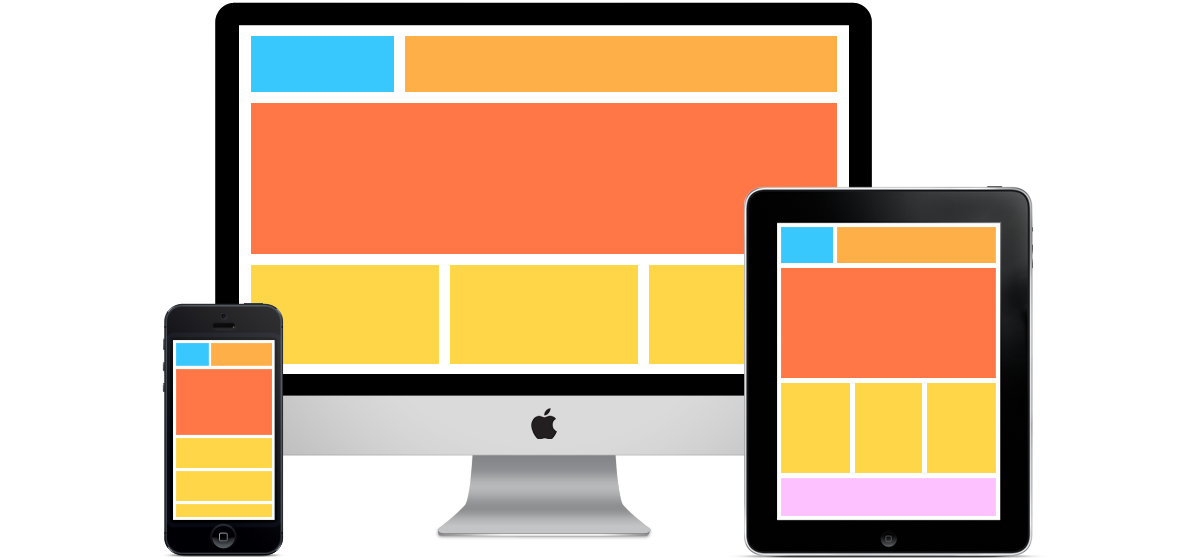Today, businesses are targeting mobile phones and its vast ecosystem as an effective way to reach out to the customers. Smartphone integration is effectively done by businesses using responsive design, native app, and web app. However, most businesses are not sure which is the best platform for reaching out to customers. They should consider multiple factors before arriving a conclusion as the requirements may change according to the type of the business, time spent on different platforms, the need for frequent use, and more. You can choose the platform after a detailed analysis that touches the positive and negative aspects of all the three platforms.
Responsive Web Design
It is a website design technique that can adapt to the screen it opens by resizing or adjusting to it. The responsive web design fits PCs, smartphones, and tablet devices of varied sizes, perfectly. It comes out with flexible layouts, flexible grids, images, and more.
It avoids the use of dedicated websites for the mobile platform, and with a single website, the businesses can reach out to its large audience. It also reduces the need for multiple versions of the site and thus can ensure better SEO – note that single version websites have better page ranking in search engines. It also avoids the need of additional maintenance and provides better control over the platform.
The responsive web design is highly suitable for informational websites, including corporate or blog sites, location-based websites, gaming and gambling sites such as Online Casinos and sportsbetting sites, media and news sites. While it offers reduced costs and a single platform, it is not giving a rich user experience similar to a mobile web app. Compared to the native apps, it can only be accessed when the internet is connected. Interestingly, people who play online games, especially HTML5, would not find any difference with the app version of the games, in terms of quality and performance.
Native Apps
These are dedicated applications created for particular mobile OS platforms and can be downloaded from the corresponding app stores. The businesses have to design separate apps for different OS in the programming languages accepted by the OS platforms. It comes with dedicated app symbol in the user interface.
Interestingly, it offers better user experience with more functionalities and more responsive app platforms. The users can launch it without the internet, and it showcases superior performance over the other options. The developers have more flexibility to add additional functionalities and room for innovation depending on the business needs. Most importantly, it integrates with the OS perfectly and syncs with various hardware of the devices, including camera, image gallery, and more. Highly useful for service websites and online retail platforms.
While businesses are designing separate apps for each platform, it adds to the total budget when considering expenses as a factor. It also needs multiple approvals from the OS based on its requirements.
Web Apps
Web apps are websites that give the feel of a mobile app. It runs on various browsers and written in web languages such as HTML5, CSS, and JavaScript. Due to that, it can be used on all the platforms and does not need any permission from the OS.
It comes in two versions: one for the mobile and the other for the website. It can be easily designed – a factor that reduces the development costs. It also offers better user experience compared to responsive web design and ensures better-streamlined performance. It is useful for information websites and services that need less navigation.
It requires loading and can only connect when the network is available. It does not come up with a dedicated app symbol nor cannot be downloaded from the app store. It showcases sluggish performance and reduced web security compared to native apps.
Conclusion
Each of these options has its own merits and demerits. You should choose the right platform according to your goals with it. Analyze your business or service and find out which option is most accurately delivers the needs of the customers with minimal steps. Also, evaluate, is there a requirement for a native app for the service.






















0 Comments